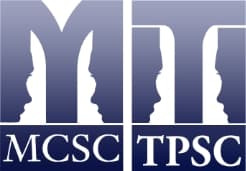Face Lift In Toronto and Mississauga
Anyone who has ever looked in the mirror and noticed signs of aging, and has looked into the available options for facial rejuvenation will have come across a myriad of articles on facelifts. But you may have wondered, how can one make sense of all the confusing and often conflicting information? You may have seen many different terms like “Mini Face Lift,” “Weekend Face Lift,” “Short Scar,” and “Long Scar.” Well read on, and we will try to demystify all of these facelift descriptions in a simple and digestible manner.
As you may be aware, the hallmark signs of aging are often summarized as “deflation, descent and degradation,” meaning that as we age our faces lose volume, gravity takes effect, and our skin quality changes such that we develop fine lines, discoloration and crepiness to the skin. Non surgical treatments like the hyaluronic acid fillers Juvederm and Restylane, and a new product, Voluma, can temporarily restore volume. For those not yet suffering from marked skin laxity these treatments can achieve dramatic improvements when administered as part of a “Soft Lift,” or our signature “Allure Lift.” These treatments are often referred to as non surgical facelifts. but eventually when we develop significant laxity, or looseness, particularly in the mid and lower face and neck resulting in drooping skin in the cheek, jowls, and hanging skin in the neck, this laxity cannot be sufficiently improved with injectable products, and that is the time surgical face lift becomes the one definitive way to restore a more youthful appearance.
Facelift surgery, or rhytidectomy, is achieved by lifting away the skin and tightening the underlying tissues by means of suturing (stitching). It is the underlying connective tissue, referred to as the SMAS, or superficial musculo-aponeurotic system, that gives structure to the face, not the skin itself. Often,some skin is removed, and sometimes liposuction is done to remove fat in the jowls and neck. the skin is then redraped. In traditional facelift surgery, the neck is therefore also treated. The main incision, and therefore the scar in this case extends from the temple down to the ear, traveling either in front of or concealed within the superficial aspect of the ear, and then circles up behind the ear and down to the back of the scalp. This is a so called “long scar” facelift. The scar itself is usually well concealed within the hair, just behind the hairline, and in the creases of skin around the ear.
In “Short Scar Facelifts” (also called Mini Lifts, ‘S’ Lifts, or Weekend Lifts), the incision extends from the temple to the front aspect of the ear, and depending on the individual’s anatomy and needs, may extend a bit behind the ear as well. The main determining factor as to whether a given patient needs a long scar or could have a short scar is whether or not they need a concomitant neck lift with their facelift. Neck bands can only be addressed with long scar facelift.
Both traditional and short scar facelifts take 2 to 5 hours and are done under general anaesthetic. The amount of bruising and downtime varies, but with Dr. Weinberg’s expertise and gentle treatment of the tissues, some patients have very little bruising and return to normal activities within days. However, it is reasonable to prepare for a 2 to 3 week recovery.
You may see references to other kinds of procedures like endoscopic facelifts, or thread lifts ( sometimes called featherlifts, or string lifts. In endoscopic facelifts small incisions are made at the corner of the mouth and within the mouth and adjacent to the ear, and an endoscopic probe is inserted, and the surgeon attempts to tighten the underlying tissues through this “keyhole”. These surgeries are not offered by many surgeons, in general because most do not believe they give the same reliable and long lasting results. As much of the procedure is done “ blind”, without directly visualizing underlying structures, there is an increased risk of damaging nerves or blood vessels. Thread lifts were achieved using string-like surgical material to hike up the underlying tissues to tighten and counteract the effects of gravity. They have been associated with short lived, not very satisfactory results, and are generally no longer offered as the “ threads” are no longer being manufactured. There are a variety of other less invasive procedures offered by some practitioners claiming to achieve wonderful results with smaller scars and little downtime, but it is important to note that in many cases these procedures do not address underlying connective tissue structure, and rather simply “pull” the skin. These will inevitably give short lived benefits, and can often result in distortion of the anatomy, such as an upward pulling on the earlobe, which is not aesthetic.
While facelift and neck lift surgery is the only definitive way to deal with significant looseness of facial skin, for those who are not ready or willing to undergo a surgical procedure, some skin tightening of a more modest degree can also be achieved with treatments like Thermage and Fractionated Laser, available at our downtown location.
It is adviseable to seek out a board certified Plastic surgeon with a great deal of facelift experieince, such as Dr. Weinberg, when considering facelift surgery.
If you are interested in more information on surgical Facelift, Soft Lift, Allure Lift, Thermage, or fractionated Laser, visit our Website at antiwrinkleclinic.com or call to (905) 273-3045 in Mississauga, or (416) 207-9090 in Toronto, and book an appointment for a consultation.


Leave a Reply